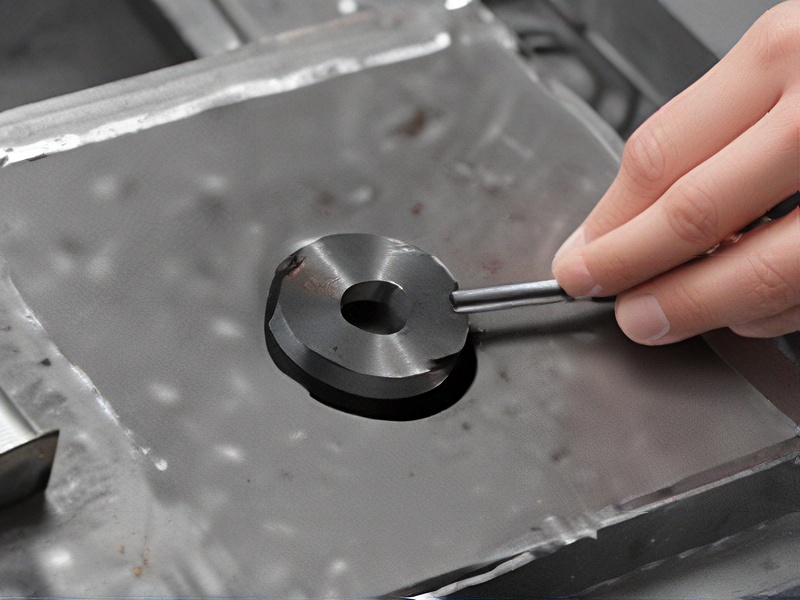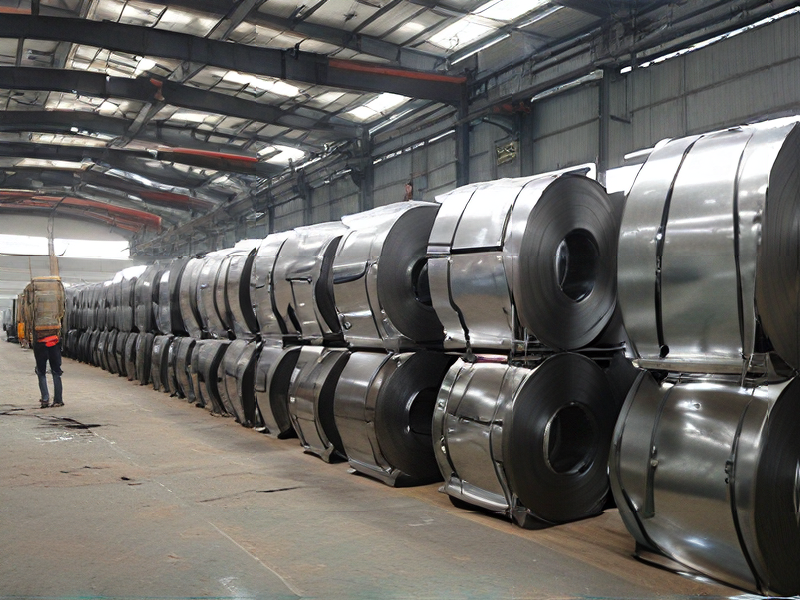Technology and Applications of 1018 metal
Technology and Applications of 1018 Metal
1018 Metal is a low-carbon steel, known for its good balance of strength, ductility, and ease of machining. It contains approximately 0.18% carbon, along with small amounts of manganese, phosphorus, and sulfur.
Technology:
1. Manufacturing: 1018 steel is often produced through the cold rolling process, enhancing its surface finish and dimensional accuracy.
2. Machining: Due to its low carbon content, 1018 steel is easily machined and formed. It is well-suited for processes like drilling, turning, milling, and threading.
3. Welding: This metal can be welded using conventional techniques such as MIG, TIG, and stick welding, although preheating might be required to avoid cracking in thicker sections.
Applications:
1. Automotive Industry: 1018 steel is widely used in the manufacturing of automotive parts such as shafts, gears, and pinions due to its excellent machinability and strength.
2. Mechanical Components: It is employed in making a variety of mechanical parts including pins, rods, spindles, and bushings.
3. Construction: Used for structural applications, such as frames and supports, where moderate strength and good weldability are essential.
4. Tooling and Fixtures: The ease of machining makes it ideal for jigs, fixtures, and tooling components in manufacturing settings.
5. Home Appliances: Parts like handles, brackets, and housings in various home appliances are often made from 1018 steel.
The versatility of 1018 steel stems from its ability to be heat treated to further enhance its mechanical properties, making it suitable for an array of industrial and commercial applications. Its affordability and availability also contribute to its widespread use.

Quality Testing Methods for 1018 metal and how to control quality
Quality testing for 1018 metal, a low-carbon steel, involves several methods to ensure it meets required specifications and standards. Here are key testing methods and quality control measures:
Testing Methods:
1. Chemical Analysis:
– Spectrometry: Determines the chemical composition, ensuring the carbon content is within 0.15-0.20%.
– Wet Chemical Analysis: Validates elements like manganese, phosphorus, and sulfur.
2. Mechanical Testing:
– Tensile Test: Measures ultimate tensile strength, yield strength, and elongation.
– Hardness Test: Commonly conducted using the Rockwell hardness test to determine material hardness.
– Impact Test: Assesses toughness, especially at lower temperatures, using Charpy or Izod methods.
3. Microstructure Examination:
– Metallography: Uses optical or electron microscopy to examine grain size, phase distribution, and potential defects like inclusions.
4. Non-Destructive Testing (NDT):
– Ultrasonic Testing (UT): Detects internal flaws and ensures the integrity of the material.
– Magnetic Particle Testing (MPT): Identifies surface and near-surface discontinuities.
Quality Control Measures:
1. Material Certification:
– Ensure suppliers provide material test certificates (MTC) validating compliance with standards.
2. Process Control:
– Implement Statistical Process Control (SPC) to monitor and control production processes, ensuring consistency.
3. Inspection Protocols:
– Conduct incoming material inspections to verify conformance with specifications before use.
– Perform in-process inspections to detect and correct deviations early.
4. Standard Operating Procedures (SOPs):
– Develop and adhere to SOPs for handling, processing, and testing 1018 metal to maintain consistency and quality.
5. Continuous Improvement:
– Utilize feedback loops and quality improvement tools like Six Sigma or Lean methodologies to continuously enhance quality control processes.
By integrating these testing methods and quality control measures, manufacturers can ensure the high quality and reliability of 1018 metal in various applications.

Tips for Procurement and Considerations when Purchasing from 1018 metal
When procuring 1018 metal, consider the following tips and considerations:
Key Considerations:
1. Material Specifications:
– Ensure that the 1018 metal meets ASTM A108 standards for chemical composition and mechanical properties.
– Verify the carbon content (approximately 0.18%), which affects its weldability and machinability.
2. Supplier Reliability:
– Choose reputable suppliers with a track record of quality and consistency.
– Check for ISO 9001 certification or other quality management systems.
3. Form and Dimensions:
– Specify the required form (e.g., bars, sheets, rods) and dimensions accurately to avoid material waste.
– Consider tolerances for machining processes.
4. Mechanical Properties:
– Understand the tensile strength, yield strength, and hardness to ensure it fits your application needs.
– 1018 metal is known for its excellent weldability and machinability but moderate strength.
5. Surface Finish:
– Determine if a specific surface finish is required. Cold-finished 1018 steel typically has a smoother surface compared to hot-rolled steel.
6. Heat Treatment:
– Assess if the metal needs any heat treatment for your application to enhance properties like hardness and ductility.
Procurement Tips:
1. Bulk Purchasing:
– Purchase in bulk to leverage volume discounts but balance against storage costs and cash flow.
2. Lead Time:
– Plan for lead times, especially for large orders or custom specifications. Ensure timely delivery to prevent project delays.
3. Cost Analysis:
– Conduct a thorough cost analysis considering not only the price per unit but also shipping, handling, and potential import duties if sourcing internationally.
4. Quality Assurance:
– Implement rigorous quality control procedures. Request mill test reports (MTRs) for verification.
5. Sustainability:
– Consider the environmental impact of your procurement choices. Look for suppliers who follow sustainable practices.
By focusing on these aspects, you can ensure efficient procurement and optimal use of 1018 metal for your projects.

FAQs on Sourcing and Manufacturing from 1018 metal in China
FAQs on Sourcing and Manufacturing from 1018 Metal in China
1. What is 1018 metal?
– 1018 metal is a low-carbon steel commonly used in manufacturing due to its excellent machinability, weldability, and affordability. It’s often used for parts requiring cold forming, such as gears, pins, and shafts.
2. Why source 1018 metal from China?
– China is a leading producer of steel, offering competitive prices, a wide range of suppliers, and advanced manufacturing capabilities. Sourcing from China can significantly reduce costs and access high-quality materials.
3. How do I find reliable 1018 metal suppliers in China?
– Research thoroughly through online directories, trade shows, and industry forums. Websites like Alibaba and Global Sources provide supplier listings. Verify credentials, check reviews, and request samples.
4. What are the key considerations when selecting a supplier?
– Consider quality standards, production capacity, pricing, lead times, and communication efficiency. Ensure the supplier complies with international standards like ISO 9001.
5. How do I ensure the quality of 1018 metal from Chinese manufacturers?
– Request material certificates, conduct third-party inspections, and obtain samples for testing. Specify detailed quality requirements in your contract.
6. What is the typical lead time for sourcing 1018 metal?
– Lead times vary based on order size and supplier capacity but typically range from 30 to 60 days, including production and shipping.
7. What are the common payment terms with Chinese suppliers?
– Common terms include 30% advance payment and 70% before shipment (T/T), or Letter of Credit (L/C) for larger orders. Negotiate terms that offer a balance of security and flexibility.
8. How can I handle logistics and shipping from China?
– Work with experienced freight forwarders and logistics companies. Ensure your Incoterms (e.g., FOB, CIF) are clear in the contract to avoid misunderstandings about shipping responsibilities and costs.
9. Are there any trade regulations to be aware of?
– Be aware of import duties, tariffs, and compliance with local regulations. Ensure all necessary documentation (bill of lading, packing list, commercial invoice) is accurate.
10. How can I mitigate risks when sourcing from China?
– Diversify your supplier base, establish clear contracts, maintain regular communication, and consider purchasing insurance to cover potential losses.
By addressing these key areas, businesses can successfully source and manufacture 1018 metal products from China.

